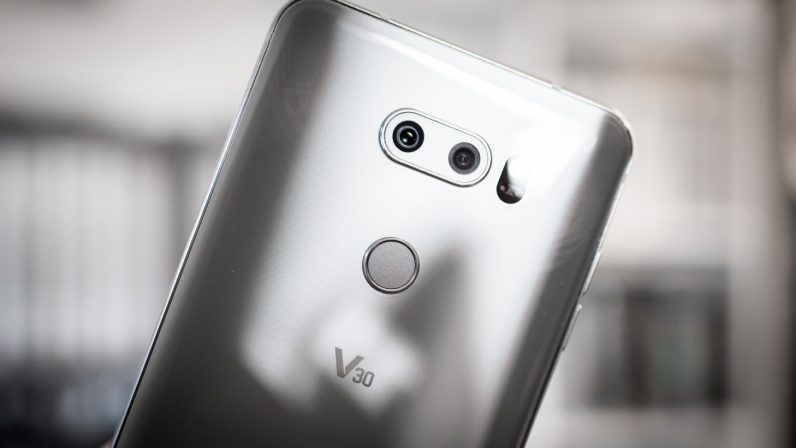
Over the past few years, smartphone manufacturers have begun to pay more attention to the optics used on phones and to use an increased aperture to improve results in low light conditions. This is cool, but I, as a photographer, are tormented by marketing noise associated with apertures: an aperture says little about the quality of work if you do not know the size of the photomatrix.
As a new feature, all other things being equal, enlarged apertures (reduced digit) mean improved quality with a lack of light and a shallower depth of field (more background blur, or
bokeh ). But the problem with photographing with the help of smartphones is that other properties are rarely equal, and this especially concerns the size of the photomatrix.
I will simplify the scheme a little, but let's say that we have two technically identical smartphones, and their aperture size or sensor size is different. If two phones have the same sensor size, then the one with the larger aperture will be better. Conversely, of the two smartphones with the same aperture, the one who has more photomatrix will win.
If both indicators differ, then everything can be very confused.
As an exaggerated example, I suggest a photo taken from F1.8 on Pixel 2.

But the photo taken with F3.5 on a good camera with a photomatrix of a much larger
micro 4: 3 standard.
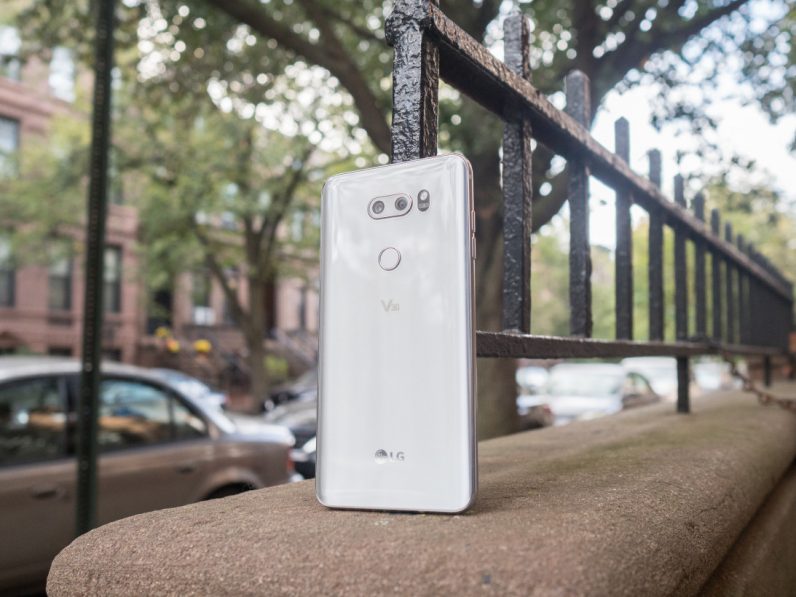
Despite the wider aperture of the Pixel, the camera with a micro 4: 3 is much more blur (and it, theoretically, will work better with a lack of illumination). This is because the micro 4: 3 sensor catches more light due to the increased surface area of the CMOS chip.
To finally clarify everything, this is how a camera with micro 4: 3 shoots at F1.8.
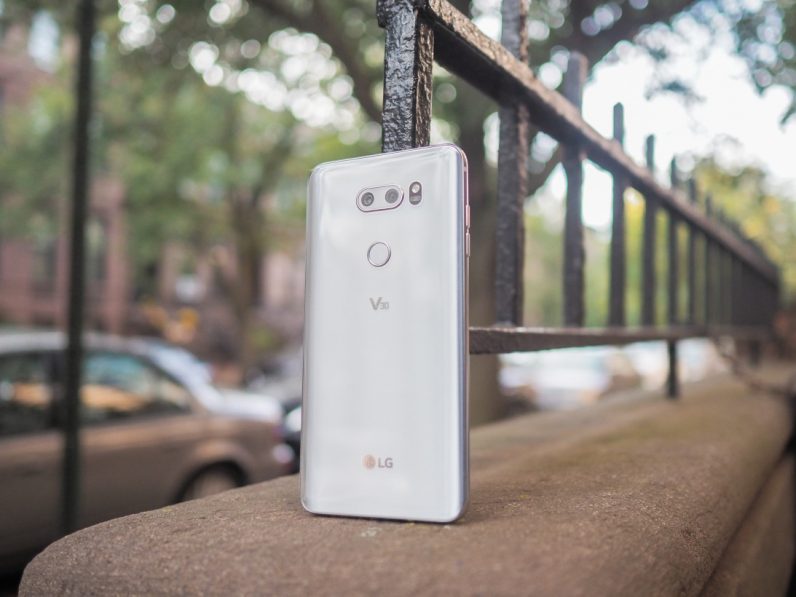
The following image compares the common sizes of photomatrices to different camera categories. Pixel 2 is considered to have a photomatrix size of 1 / 2.55 ”, or slightly less than the smallest photomatrix in this image. The difference in size can be assessed visually.
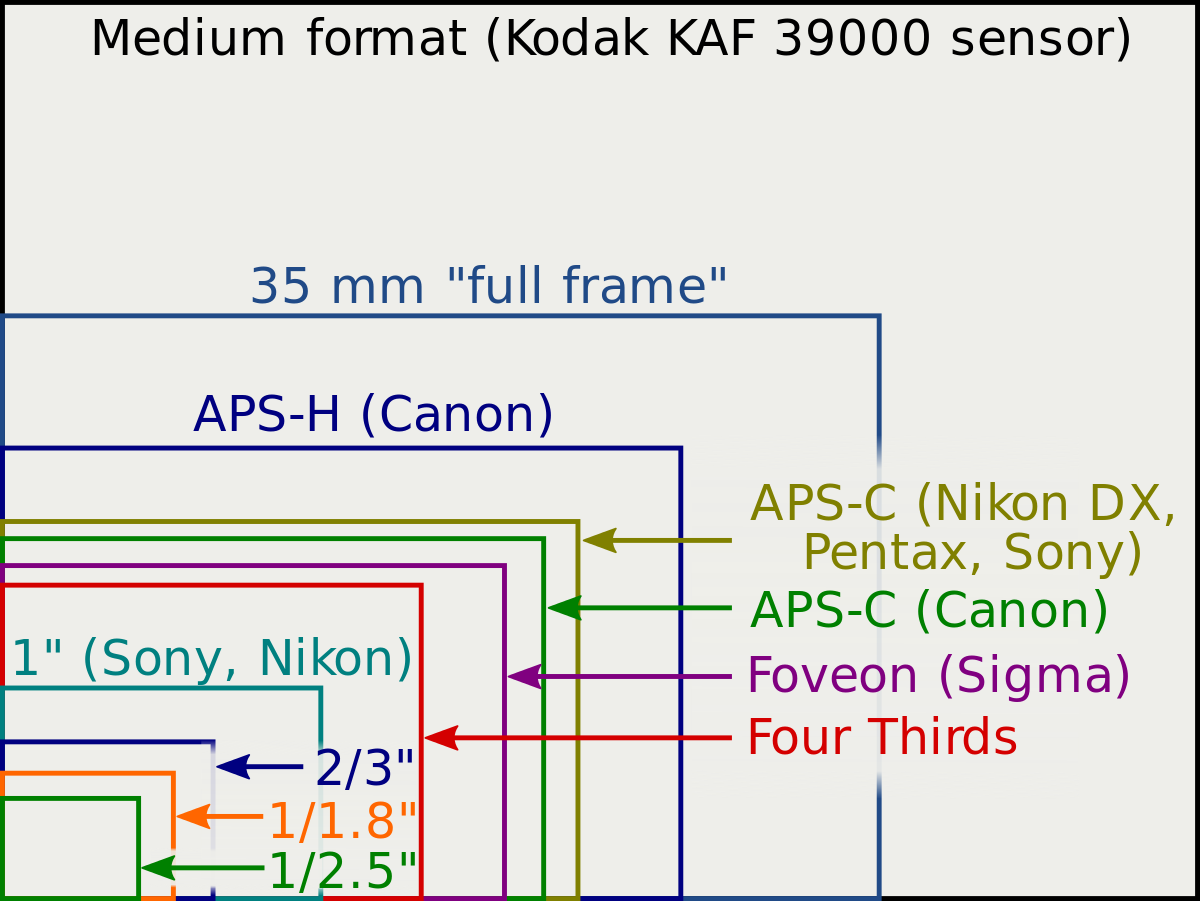
I started talking about it because smartphone manufacturers too often declare a large aperture, hiding information about the size of photomatrix. It can usually be assessed by other information, for example, by the size of the point and field of view, but this is an undesirable complication of the situation.
Take the LG V30, whose aperture F1.6 was the largest smartphone at the time of its announcement, and it was actively promoted in marketing materials. It was expected that this would be a serious update after the V20 and F1.8, and I was looking forward to when I could make night photos with beautiful bokeh. But then I realized that LG did not write anything about the size of the V30 matrix. And for good reason: the LG V30 uses a smaller sensor (1/3 ") than the V20 (1 / 2.6"), which generally eliminates the aperture advantage.
And it cannot be said that the lenses and the matrix on the V30 did not get any better - in general, the camera turned out better - but it is rather hypocritical to boast of an increase in the aperture while the matrix is decreasing. Worse yet, with a reduced matrix, the dynamic range may be worse, and this cannot be corrected by increasing the aperture.
But it cannot be said that reducing the matrix is always bad. Pixel 2 also made such a transition, from the matrix 1 / 2.3 ″ to 1 / 2.55 ″, but instead of increasing the aperture (F1.8 vs. F2.0), it added optical image stabilization so that the phone behaved better in poor light, and apparently, uses advanced technology in the matrix.
Again, the problem is that marketing focuses all the attention on increasing the aperture, and does not mention a decrease in the matrix. Sometimes the advantages of a fairly large aperture exceed the disadvantages of a shallow matrix in terms of working in a situation with a lack of lighting, but manufacturers must report this situation.
So why do smartphone makers continue to use small matrices? Because of the thickness, of course. Large matrices need large lenses and other components for functions such as, for example, optical stabilization.
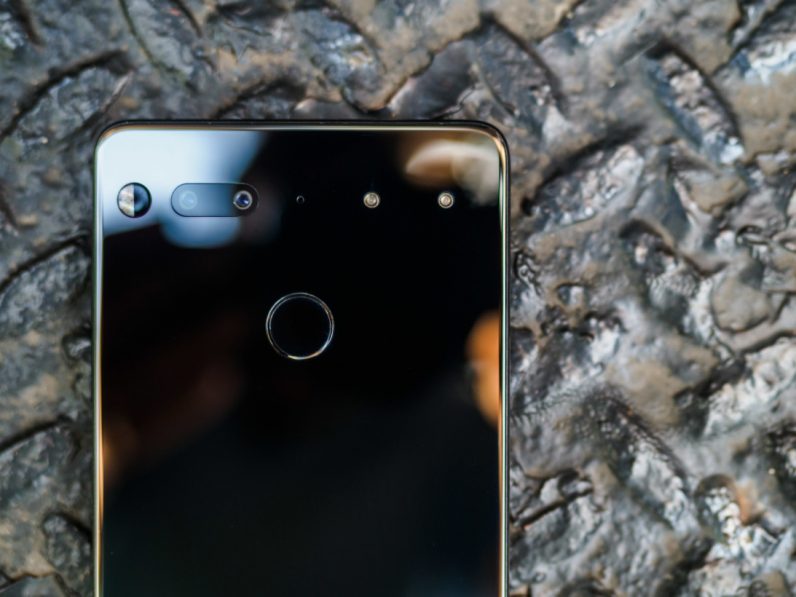 Essential PH-1 has two 1/3 "matrices, but they cannot be compared with one larger matrix without a radical improvement in image processing.
Essential PH-1 has two 1/3 "matrices, but they cannot be compared with one larger matrix without a radical improvement in image processing.By the way, this is one of the reasons why manufacturers have come to use a system of dual cameras, which have one RGB matrix and the other a monochrome matrix. In these systems, the smallest matrices for the main rear cameras are used, which makes it possible to make the frame thinner (for example, the Essential Phone avoided thickening around the camera by using two matrices of 1/3 ″). Theoretically, these phones can do with two tiny matrices, combining the details of two images, but in practice they rarely do it as well as one large matrix.
Of course, photos in smartphones are affected by a lot more parameters than the size of the matrix and aperture. Matrix technology, lens quality, software processing, HDR-algorithms, optical stabilization, modern tricks like compute bokeh.
The bottom line is that you do not need to judge the camera of the phone only by its characteristics - the results are more important than anything else. Smartphone makers: stop showing off large apertures if you simultaneously squeeze photo matrices.